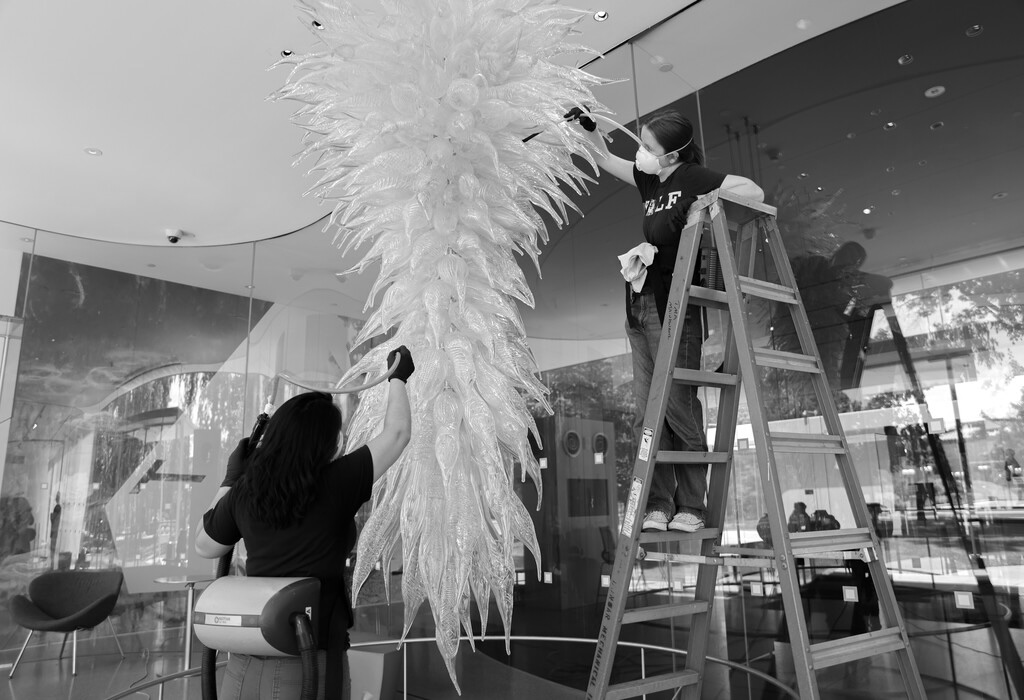Making Offers That Stick: How to Avoid Candidate Drop-Off
One of the most frustrating experiences an employer may have when hiring is extending an offer to an exciting candidate, only for them to decline. After all the time spent screening resumes, conducting interviews, and negotiating terms, you’re left wondering what went wrong. While every situation is different, understanding some of the common reasons we see candidates turn down job offers can help you refine your recruitment process to secure the talent your organisation needs.
Lowballing Salary
One of the primary reasons candidates turn down offers is inadequate compensation. While salary isn’t the only factor, it does play a major role in attracting top talent. If your offer is significantly below industry standards or doesn’t align with the candidate’s expectations, they may walk away, especially if they are in other processes or have other offers on the table.
When it comes to roles in the commercial art world, salaries can be particularly tricky to gauge due to the competitive nature of the industry and various remuneration structures across art world businesses. If you’re trying to attract an in-demand candidate away from their current role, compensation becomes an even more crucial factor. For these candidates, moving to a new job often involves risk, and a compelling salary offer is essential to making the move worthwhile.
How to Fix It:
Ensure your compensation packages are competitive by leveraging SML’s bespoke market intelligence services such as salary benchmarking. Understand the current salary trends and adjust your offers accordingly. Being upfront and transparent about salary during early discussions can also help manage expectations and reduce the likelihood of candidates being caught off guard later in the process.

Delays in the Recruitment Process
A common reason candidates decline offers is a lengthy or delayed hiring process. In today’s fast-paced job market, candidates often have multiple options, and if your hiring process takes too long, they may lose interest or accept an offer elsewhere.
A slow recruitment process can signal to candidates that the organisation lacks urgency, which can be a red flag. It also disrupts candidates’ job search momentum, leaving them to question whether the position is truly a priority for your team.
How to Fix It:
Streamline your process by setting clear timelines and expectations from the beginning. Stay in regular communication with candidates or your recruiter, providing updates at every stage. You can also make use of SML’s market mapping to gain a better understanding of the current candidate market and adjust your recruitment strategy to act faster and more decisively.

Lack of Clear Career Path or Growth Opportunities
Candidates are often looking for roles where they can grow and develop over time. If your offer doesn’t include a clear pathway for career advancement or lacks professional development opportunities, candidates may hesitate to accept.
In competitive industries like the commercial art world, where talent often has choices, candidates need to see that a role aligns with their long-term goals. Without a compelling growth trajectory, they may feel that the position doesn’t offer enough potential to warrant making a move.
How to Fix It:
Make sure to emphasise any professional development opportunities with your recruiter so they can highlight this information to prospective candidates. Reiterate growth opportunities during the interview process, whether it’s potential for promotion, training programs, or exposure to high-level projects. Highlight how your organisation invests in its employees’ growth, and make these opportunities clear in your job offer as well.
Poor Cultural Fit or Company Values
While compensation and career growth are important, candidates are also concerned about cultural fit within an organization. If a candidate feels that their values don’t align with your company culture, they may decline the offer, even if everything else is in place.
How to Fix It:
Ensure that you’re clearly articulating your company’s values and culture during the recruitment process. Discuss the day-to-day work environment and what makes your organisation unique. It’s important to involve key team members in the interview process to give candidates a genuine sense of what it’s like to work with your team.

Uncertainty About Role Expectations
Candidates occasionally turn down offers because of unclear or unrealistic job expectations. If the responsibilities of the role are not well-defined or seem to change drastically throughout the interview process, candidates may feel hesitant about accepting the offer.
In the art world, where roles can sometimes be fluid and evolve quickly, it’s crucial to provide clarity upfront. Vague or shifting job descriptions can create uncertainty, leading candidates to question whether they truly understand what they’re signing up for.
How to Fix It:
Provide a clear, detailed job description with well-defined responsibilities and expectations. SML can often offer guidance to this end based on our industry expertise. Be transparent about the role’s challenges and opportunities and ensure that the candidate understands how their contributions will impact your organisation.
The Competition
Sometimes, candidates decline an offer simply because they have better opportunities elsewhere. This could be due to more competitive salaries, better growth prospects, or simply a more attractive company culture. If your offer is not competitive enough or if you don’t act quickly, you may find that top candidates are already committed to other opportunities.
How to Fix It:
Make use of SML’s market intelligence offerings to stay ahead of the competition. Know what your competitors are offering in terms of salary, benefits, and workplace culture, and ensure your offer stands out. Quick action, as well as offering compelling incentives, can help you secure top talent before they accept another offer.
Additionally, working with SML to identify candidates who may be interested in working with your organisation—even before they’re actively on the job market—can give you a significant advantage. This proactive approach helps you build a pipeline of potential candidates, allowing you to approach talent at the right time with the right offer, giving you a leg up on your competitors.
Additional Resources
Understanding why candidates decline job offers is the first step in improving your recruitment process. By ensuring competitive compensation, streamlining your hiring timeline, highlighting career growth opportunities, emphasising cultural fit, clarifying role expectations, and staying competitive, you can increase your chances of landing the right talent.
In the ever-evolving art market, where talent is both valuable and limited, using SML’s market intelligence services can give you the edge in making the right offers. The right hiring decisions start with the right data, and when you combine that with a thoughtful, transparent recruitment process, you’re more likely to secure top candidates who will thrive in your organisation.
For more information, get in touch via our Client Enquiry Form, and check out additional resources below:
- Our 2024 Art Operations Talent Report in collaboration with Convelio explored key hiring trends and challenges in art operations.
- We’re excited to release new data and insights in our forthcoming talent report in partnership with ArtTactic, which will look at the evolving landscape of talent in the art world. Stay tuned!












